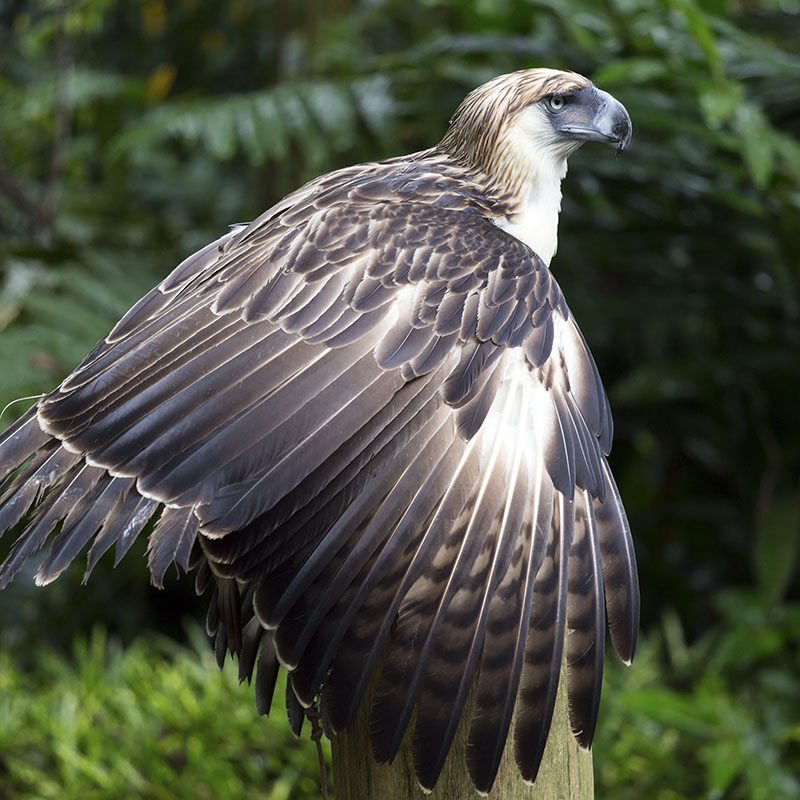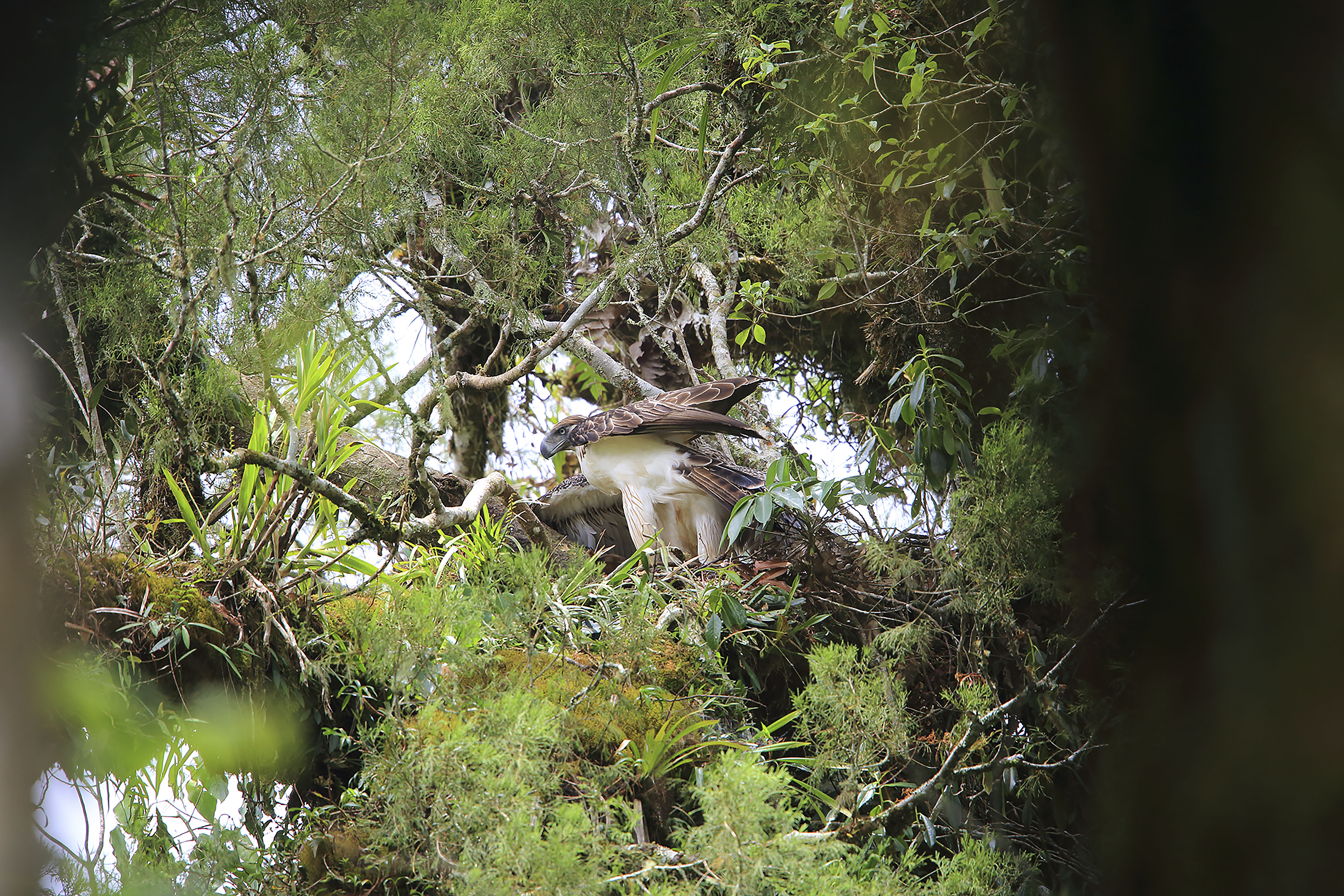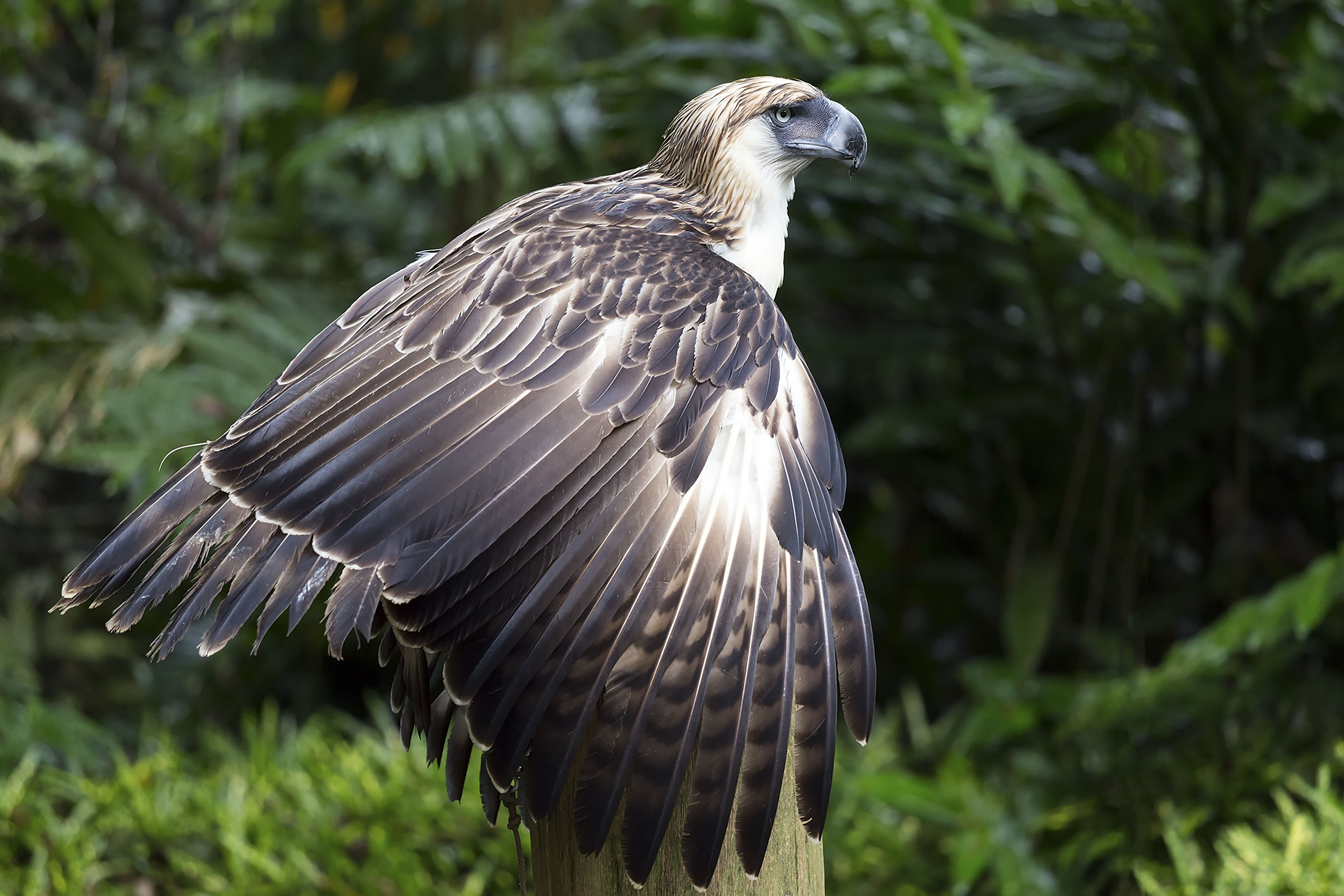Philippine Eagle
(Pithecophaga jefferyi)

Philippines Moist Forests
STATISTICS
Height up to
102 cm
Weight up to
8 kgs
Lifespan
60 Years
Wingspan
220 cm
Flies - Diurnal - Motile - Sedentary - Solitary - Territorial
Endemic to the forests of the Philippines, the Philippine Eagle has brown and white plumage, a shaggy crest and is considered to be the largest of the extant eagles in the world in terms of length and wing surface. Declared the national bird of the Philippines, it is among the rarest and most powerful birds in the world.
The apex predator in its range, the Philippine Eagle was once believe to feed on monkeys exclusively, but this has proven to be inaccurate. Rather, it is an opportunistic hunter that takes prey based on their local level of abundance and ease, with targets ranging from small bats to Philippine deer.
The Philippine Eagle engages in two hunting techniques: still-hunting and perch-hunting. The former entails the bird sitting motionless waiting for prey, and the latter is more of a periodic glide down the canopy in pursuit of prey.
BIODIVERSITY BENEFIT
Population Control
THREATS
Habitat Loss
Forest destruction through commercial timber extraction.
Hunting
Hunted for food.
Wildlife Trade
Captured for zoo exhibits.
PROTECT THE WILDARK 100




